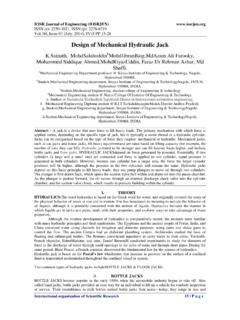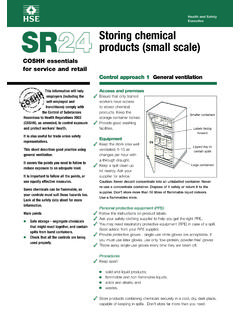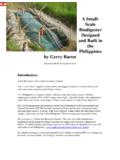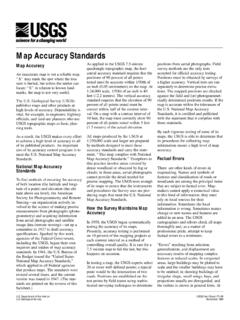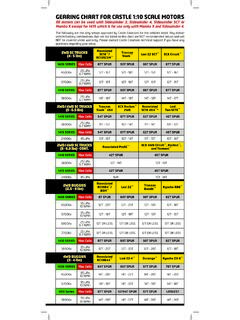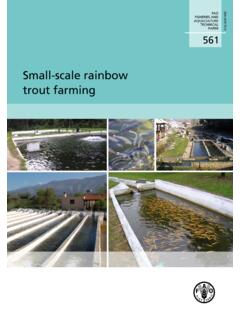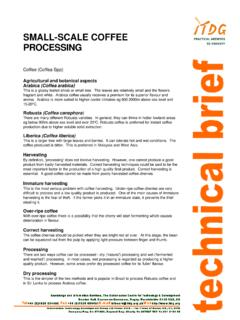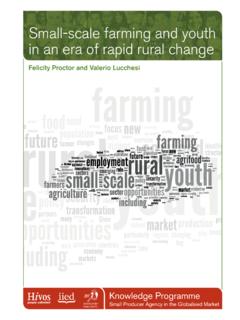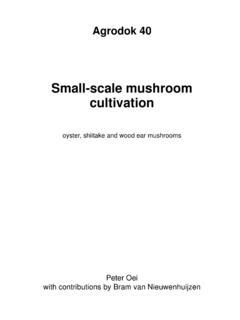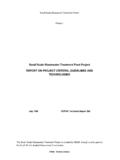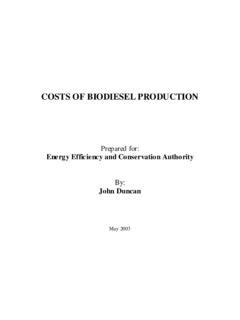Transcription of RICE MILLING - iosrjen
1 IOSR Journal of Engineering ( iosrjen ) ISSN (e): 2250-3021, ISSN (p): 2278-8719 Vol. 04, Issue 05 (May. 2014), ||V4|| PP 34-42 International organization of Scientific Research 34 | P a g e Rice MILLING Poonam Dhankhar (Food tech), . & T, Hissar, Abstract: - The Rice MILLING is the process that helps in removal of hulls and bran s from paddy grains to produce polished rice. Rice is rich in genetic diversity with thousands of varieties grown throughout the world. Rice has been one of man's most important foods. Today, this unique grain helps sustain two-thirds of the world's population.
2 It is life for thousands of millions of people. It is deeply embedded in the cultural heritage of their societies. About four-fifths of the world's rice are produced by small - scale farmers and are consumed is the process wherein the rice grain is transformed into a form suitable for human consumption, therefore, has to be done with utmost care to prevent breakage of the kernel and improve the present paper lucidly explains ricce MILLING process and its importance I. INTRODUCTION Paddy or rice grain consists of husk and brown rice. Brown rice, in turn, contains bran which comprises the outer layer and the edible portion. Rice MILLING is removal or separation of husk (dehusking) and bran to obtain the edible portion for consumption.
3 The process has to be accomplished with care to prevent excessive breakage of the kernel and improve recovery of paddy or rice. The extent of recovery during MILLING depends on many factors like variety of paddy, degree of MILLING required, the quality of equipments used, the operators, etc. MILLING is the process wherein the rice grain is transformed into a form suitable for human consumption, therefore, has to be done with utmost care to prevent breakage of the kernel and improve the rice is milled further to create a more visually appealing white harvesting and drying, the paddy is subjected to the primary MILLING operation which includes de-husking as well as the removal of bran layers (polishing) before it is consumed.
4 In this process the rice which is obtained after MILLING is called raw other process through which rice is obtained after MILLING is called "Parboiling Rice." Nearly 60% of the total rice produced in India is subjected to MILLING losses may be qualitative or quantitative in nature. Quantitative or physical losses are manifested by low MILLING recovery while low head rice recovery or high percentage of broken kernel reflects the qualitative loss in rice grains. II. METHOD OF MILLLING ) Traditional Method:Before the advent of mechanical MILLING , hand-pounding traditional method of rice MILLING was in practice. In fact, hand-pounding rice has got more nutritive value as compared to machine MILLING rice.
5 In hand-pounding, a variety of implements is used such as :Mortor and Pestle, Hand Stone (Chakki)etc ) Mechanical Method:With the introduction of mechanized mills, hand-pounding method has steadily decreased because it could not compete with machine mills. The conventional mills in use can be categorized into three main types : Huller mills Sheller-Huller mills Sheller-Cone Polisher mills. III. IMPORTANCE OF MILLING MILLING is a crucial step in post-production of rice. The basic objective of a rice MILLING system is to remove the husk and the bran layers, and produce an edible, white rice kernel that is sufficiently milled and free of impurities.
6 Depending on the requirements of the customer, the rice should have a minimum of broken kernels. IV. THE RICE KERNEL COMPOSITION Most rice varieties are composed of roughly 20% rice hull or husk, 11% bran layers, and 69% starchy endosperm, also referred to as the total milled rice. Total milled rice contains whole grains or head rice, and brokens. The by-products in rice MILLING are rice hull, rice germ and bran layers, and fine brokens. V. MILLING SYSTEMS A rice MILLING system can be a simple one or two step process, or a multi stage process. In a one step MILLING process, husk and bran removal are done in one pass and milled or white rice is produced directly out of paddy.
7 In a two step process, removing husk and removing bran are done separately, and brown rice is Rice MILLING International organization of Scientific Research 35 | P a g e produced as an intermediate product. In multistage MILLING , rice will undergo a number of different processing steps. Depending on whether the the paddy is milled in the village for local consumption or for the marketing rice MILLING systems can be classified into the categories village rice mills and commercial mills. VI. COMMERCIAL MILLING Commercial MILLING systems mill the paddy in stages, and hence are called multi-stage or multi-pass rice mills.
8 The objective of commercial rice MILLING is to reduce mechanical stresses and heat buildup in the grain, thereby minimizing grain breakage and producing uniformly polished grain. Compared to village-level systems, the commercial MILLING system is a more sophisticated system configured to maximize the process of producing well-milled, whole grains. The rice MILLING facility comes in various configurations, and the MILLING components vary in design and performance. Configuration refers to how the components are sequenced. The flow diagram below shows a modern commercial mill catering to the higher end market. It has three basic stages, the husking stage, the whitening-polishing stage, and the grading, blending, and packaging stage.
9 In modern rice mills, many adjustments ( rubber roll clearance, separator bed inclination, feed rates) are automated for maximum efficiency and ease of operation. The whitener-polishers are provided with gauges that sense the current load on the motor drives which gives an indication of the operating pressure on the grain. This provides a more objective means of setting MILLING pressures on the grain. ) Objective of commercial MILLING :- A commercial rice miller will have following objectives: produce edible rice that appeals to the customer- rice that is sufficiently milled and free of husks, stones, and other non-grain materials maximize the total milled rice recovery out of paddy minimize grain breakage VII.
10 TERMINOLOGY To understand the different objectives of rice MILLING , please review the following terminology. ) Rough rice: Also called paddy rice. Rice as it comes from the field. Rice kernels are still encased in their inedible, protective hull. ) Brown rice, husked rice or cargo rice: The least processed form of rice. It has the outer hull removed, but still retains the bran layers that give it a characteristic tan color and nut-like flavor. Brown rice is edible but chewier texture than white rice. Cooking time of brown rice is longer than milled rice ) Milled rice: Also called white rice, or rice after MILLING which includes removing all or part of the bran and germ from the rough rice.

